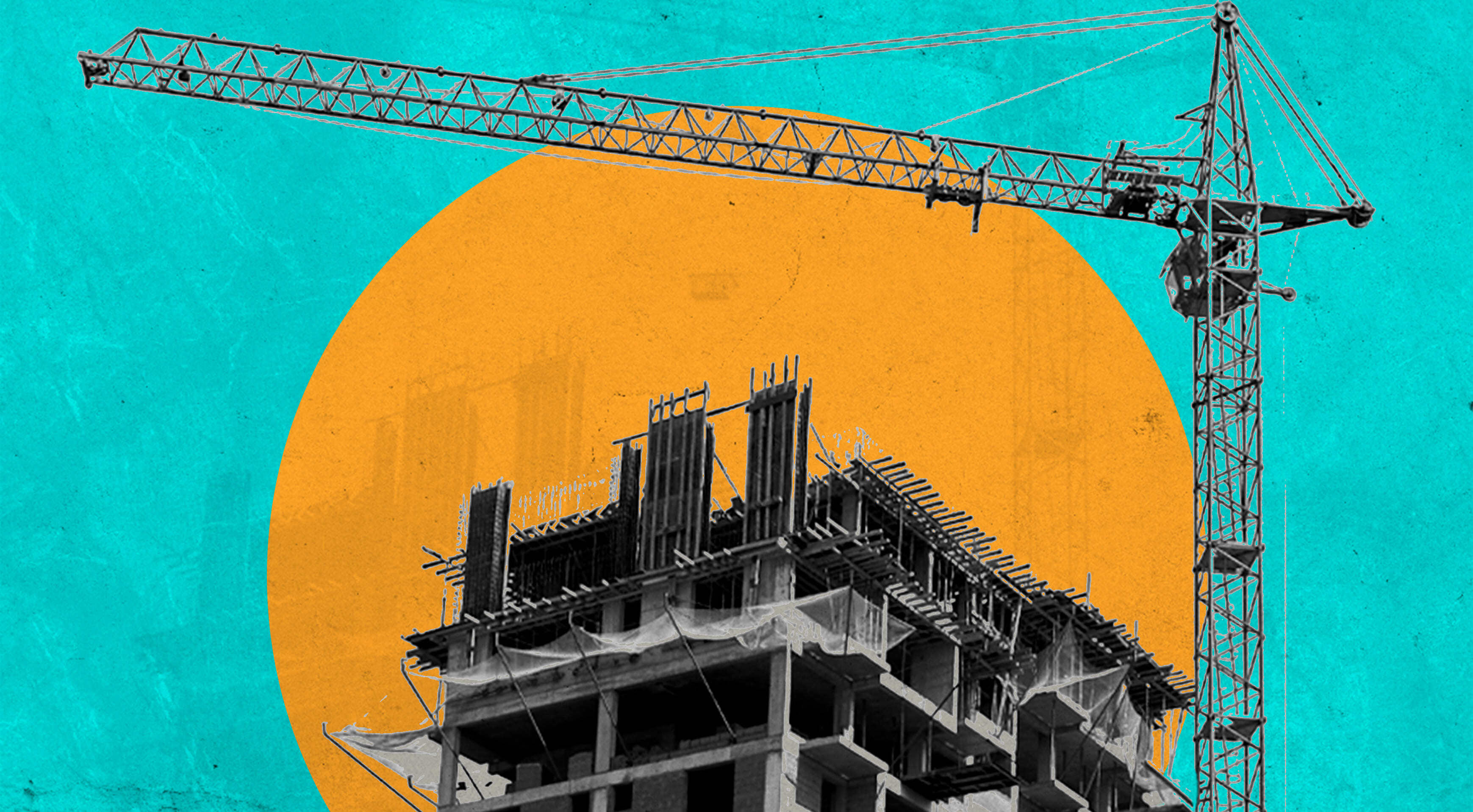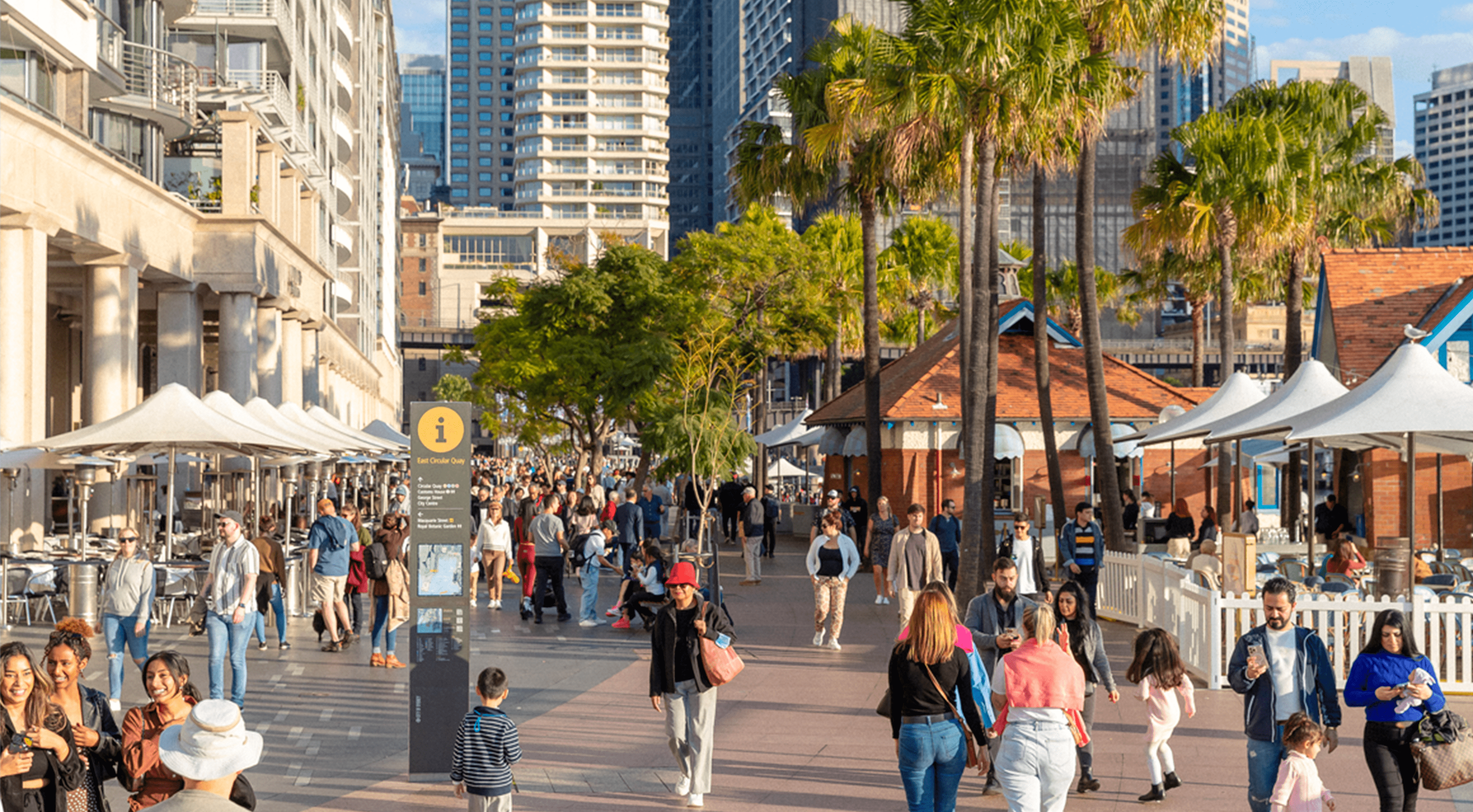Features > Property News & Insights > In-Depth Analyses
Australia's 1.2 million homes goal drifts further away

KEY POINTS
- New forecasts predict Australia will fall short of the National Housing Accord target of building 1.2 million new homes by July 2029
- Master Builders Australia says there will be a shortfall of over 166,000 homes, a blow-out from its previous predictions of a 112,000 home shortfall
- The building group says the economic climate, a high number of builder insolvencies, construction bottlenecks and a shortage of skilled labour are holding residential construction back
A new forecast shows Australia is moving further and further away from achieving the National Housing Accord target of building 1.2 million new homes over the next five years.
The projections from the leading construction industry body, Master Builders Australia, show the residential outlook has worsened since the group released its last set of forecasts five months ago.
Faced with continuing strong population growth and a move towards smaller households, the findings signal Australia’s housing crisis will continue into the 2030s.
The details
Five months ago, Master Builders Australia forecast that Australia would fall about 112,000 homes short of the nationally agreed target of 1.2 million new homes by mid 2029.
The industry group now projects that the shortfall has blown out to over 166,000 homes.
In 2022, facing a national housing crisis, the Federal and State governments, together with representatives of the building and property industry (including Master Builders Australia), agreed to an aspirational target to build 1 million new homes between 1st July 2024 and the 30th of June 2029.
In August 2023, the National Cabinet agreed to update this to 1.2 million new homes after the Federal government promised the states higher financial incentives for delivering more dwellings.
That means around 240,000 homes on average would have to be completed each financial year between now and 2028-29 to meet the updated target.
Master Builders latest projections point to 1,034,000 new home starts over the 5 year timeframe, 13.8% lower than the Accord target.
The group’s CEO Denita Wawn says when the Accord period formally started on the 1st of July this year, new home building was at its weakest position in a decade.
“The downgrade in our April forecasts is off the back of a prolonged battle to curb inflation, persistently high interest rates and continued constraints on the supply side of the residential building market,” she says.
“We are expecting the market to gradually recover over the next few years as the macroeconomic conditions improve, but more work is needed to address the housing shortfall.”
The projections come in the latest edition of Master Builders’ “Building and Construction Industry Forecasts”.
The report says that it’s likely that “around 162,00 new home starts occurred during 2023–24, the worst annual total in over a decade and the third consecutive year of decline.”
“Over the course of the year, detached home starts sank by -10% while higher density home commencements edged only slightly lower (-1.9%).”
“Over the past five years, less than 930,000 new homes were commenced across the country – a quantum which is alarmingly adrift of the Accord’s 1.2 million goal.”
Labour costs
While Master Builders blames the economic climate and a high number of builder insolvencies, it is particularly focused on the chronic shortage of skilled labour in the building industry.
In a speech on Monday, the Federal Housing Minister Clare O’Neil described the shortage of construction workers as “chronic”.
“We need 90,000 more workers in the residential construction sector to get the houses built that we need,” she told a housing summit.
However, according to Master Builders, that’s only half the problem.
“Skills shortages would be less damaging were it not for the sizeable reduction in labour productivity over the past ten years,” their report says.
“The amount of output produced per worker per hour in the construction industry is now about 18% lower than it was a decade ago.”
“This means that more workers are required to deliver the same amount of output as before – a classic case of doing less with more.”
The report says there’s several reasons for this drop in productivity, but says “ongoing changes to the industrial relations and regulatory frameworks are likely to make things even worse.”
It points out that hourly wages in the construction sector are now 13.5% higher than they were before the pandemic.
That implies annual wages growth of only about 3.25% per year since 2020, which is hardly keeping up with inflation and cost of living increases over that period..
“Workforce shortages continue to be the biggest challenge for the industry across all sectors,” CEO Denita Wawn says.
“At the Federal level, the Government's priority should be growing the building and construction workforce,” she says, adding that “this must include a mix of domestic and skilled migration workers.”
“We need to think outside of the box with better apprenticeship incentives, reskilling migrants already in Australia, and a targeted international campaign to bring in skilled tradies.”
Apartment drought
Master Builders makes clear that apartment construction will need to ramp up significantly in order for Australia to come anywhere near the 1.2 million homes target.
“The performance of higher density buildings will be crucial to meeting the target and combating the housing and rental crisis,” Denita Wawn says.
However, she points out that “build times for these projects have blown out since the pandemic by around 20% from approval to completion, and costs have risen by around 40%.”.
Master Builders assessment is backed by a series of new market reports from high-density property specialists Charter Keck Cramer.
The company found that high construction costs, exacerbated by material and labour shortages, are leading to an undersupply of apartment projects.
The market reports point out that new apartment launches in Melbourne have reached a 15-year low, with many projects remaining financially unfeasible.
This could lead to a significant apartment undersupply over the next 2-to-3 years, Charter Keck Cramer warns.
It claims Victoria’s tax policies, including high stamp duty and foreign buyer taxes, are also deterring investment.
The company also says Sydney’s apartment market is beset with problems, with construction costs up 30-50% since the pandemic.
Only 8,400 apartments were completed in the 2023-24 financial year, compared to an annual goal of 52,680 new dwellings.
Charter Keck Cramer says there’s an urgent need for state government intervention to look at issues like big developer contributions and slow approvals processes.
Stay Up to Date
with the Latest Australian Property News, Insights & Education.




.png?width=292&height=292&name=Copy%20Link%20(1).png)
 SIGN UP FOR FREE NEWSLETTER
SIGN UP FOR FREE NEWSLETTER
%20(1).png)






.jpg?width=1920&height=1080&name=Warning%2c%20You%20Might%20Be%20Facing%20Higher%20Taxes%20Soon%20(1).jpg)





.png?width=1920&height=1080&name=Rate%20Drops%20Signal%20BIGGEST%20Property%20Boom%20in%20DECADES%20(1).png)

.jpg?width=1920&height=1080&name=Labor%20vs%20Liberal%20These%20Housing%20Policies%20Could%20Change%20the%20Property%20Market%20Forever%20(1).jpg)
.jpg?width=1920&height=1080&name=QLD%20Slashes%20Stamp%20Duty%20Big%20News%20for%20Investors%20%26%20Home%20Buyers%20(1).jpg)
.jpg?width=1920&height=1080&name=Trump%20Just%20Slapped%20Tariffs%20%E2%80%93%20Here%E2%80%99s%20What%20It%20Means%20for%20Australia%20(1).jpg)
.jpg?width=1920&height=1080&name=Federal%20Budget%202025%20More%20Debt%2c%20No%20Housing%20%E2%80%93%20Here%E2%80%99s%20What%20You%20Need%20to%20Know%20(1).jpg)
.jpg?width=1920&height=1080&name=Australias%20Housing%20Crisis%20is%20about%20to%20get%20MUCH%20Worse%20(New%20Data%20Warns).jpg)
%20(1).jpg?width=1920&height=1080&name=Australias%20RENTAL%20CRISIS%20Hits%20ROCK%20BOTTOM!%20(2025%20Update)%20(1).jpg)
%20(1).png?width=1920&height=1080&name=Is%20Adelaide%20Still%20a%20Good%20Property%20Investment%20(2025%20UPDATE)%20(1).png)
.jpg?width=1920&height=1080&name=RBA%20Shocks%20with%20Rate%20Cuts!%20What%E2%80%99s%20Next%20for%20Property%20Investors%20(1).jpg)
%20(1).jpg?width=1920&height=1080&name=I%20Predict%20The%20Feb%20Rate%20Cut%20(My%20Price%20Growth%20Prediction)%20(1).jpg)
.png?width=1920&height=1080&name=Why%20Property%20Prices%20Will%20Rise%20in%202025%20Market%20Predictions%20(1).png)
.jpg?width=1920&height=1080&name=Why%20Investors%20Are%20Choosing%20Apartments%20Over%20Houses%202%20(1).jpg)
.jpg?width=1920&height=1080&name=Why%20Rate%20Cuts%20Will%20Trigger%20A%20Property%20Boom%20(1).jpg)
.jpg?width=1920&height=1080&name=Retire%20On%202Million%20With%20One%20Property%20(Using%20SMSF).jpg)
.jpg?width=1920&height=1080&name=4%20Reasons%20Why%20You%20Should%20Invest%20in%20Melbourne%20Now%20(1).jpg)
%20(1).jpg?width=1920&height=1080&name=Old%20Property%20vs%20New%20Property%20(Facts%20and%20Figures%20Revealed)%20(1).jpg)
%20(1).jpg?width=1920&height=1080&name=Will%20The%20New%20QLD%20Govt%20Create%20a%20Property%20Boom%20or%20Bust%20(My%20Prediction)%20(1).jpg)
%20Scott%20Kuru%20(1).jpg?width=1920&height=1080&name=Inflation%20Hits%20Three-Year%20Low%20(Will%20RBA%20Cut%20Rates%20Soon)%20Scott%20Kuru%20(1).jpg)
.jpg?width=1920&height=1080&name=How%20to%20Buy%20Investment%20Property%20Through%20SMSF_%20The%20Ultimate%20Guide%20(1).jpg)
.jpg?width=1920&height=1080&name=Victoria%20Slashes%20Stamp%20Duty%20Melbourne%20Set%20to%20Boom%20Scott%20Kuru%20(1).jpg)
.png?width=1571&height=861&name=Are%20Foreign%20Buyers%20Really%20Driving%20Up%20Australian%20Property%20Prices%20(1).png)
.jpg?width=1920&height=1080&name=The%20Single%20Factor%20That%20Predicts%20Property%20Growth%20Regions%20(1).jpg)
%20Scott%20Kuru%20(1).jpg?width=1920&height=1080&name=My%20Prediction%20On%20Rates%20%26%20Negative%20Gearing%20(Market%20Crash)%20Scott%20Kuru%20(1).jpg)

-1.png?width=1920&height=1080&name=Major%20Banks%20Cut%20Rates%20Will%20RBA%20Follow%20Suit%20(Sept%20Rate%20Update)-1.png)
%20Scott%20Kuru-1.png?width=1920&height=1080&name=Rate%20Cut%20Coming%20What%20New%20Zealands%20Move%20Means%20for%20Australia%20(Sept%20Prediction)%20Scott%20Kuru-1.png)
%20(1).jpg?width=1920&height=1080&name=Buy%20when%20the%20interest%20rates%20are%20high!%20(Why%20you%20must%20buy%20now!)%20(1).jpg)
.jpg?width=1920&height=1080&name=Carms_Revised%20Taxes%20Due%20Aug%209%20YT%20Thumbnail02%20(1).jpg)
.jpg?width=1920&height=1080&name=Carms_Too%20Little%20Too%20Late%20Aug%207%20YT%20Thumbnail01%20(1).jpg)









.jpg?width=1920&height=1080&name=Carms_Rate%20Drop%20In%20July%20Jun%2010%20YT%20Thumbnail02%20(1).jpg)
.jpg?width=1920&height=1080&name=Carms_Own%20a%20Property%20V6%20Jun%205_YT%20Thumbnail%20(1).jpg)









.png?width=1920&height=1080&name=Artboard%201%20(3).png)






.jpg?width=1920&height=1080&name=YT%20thumbnail%20%20(1).jpg)

